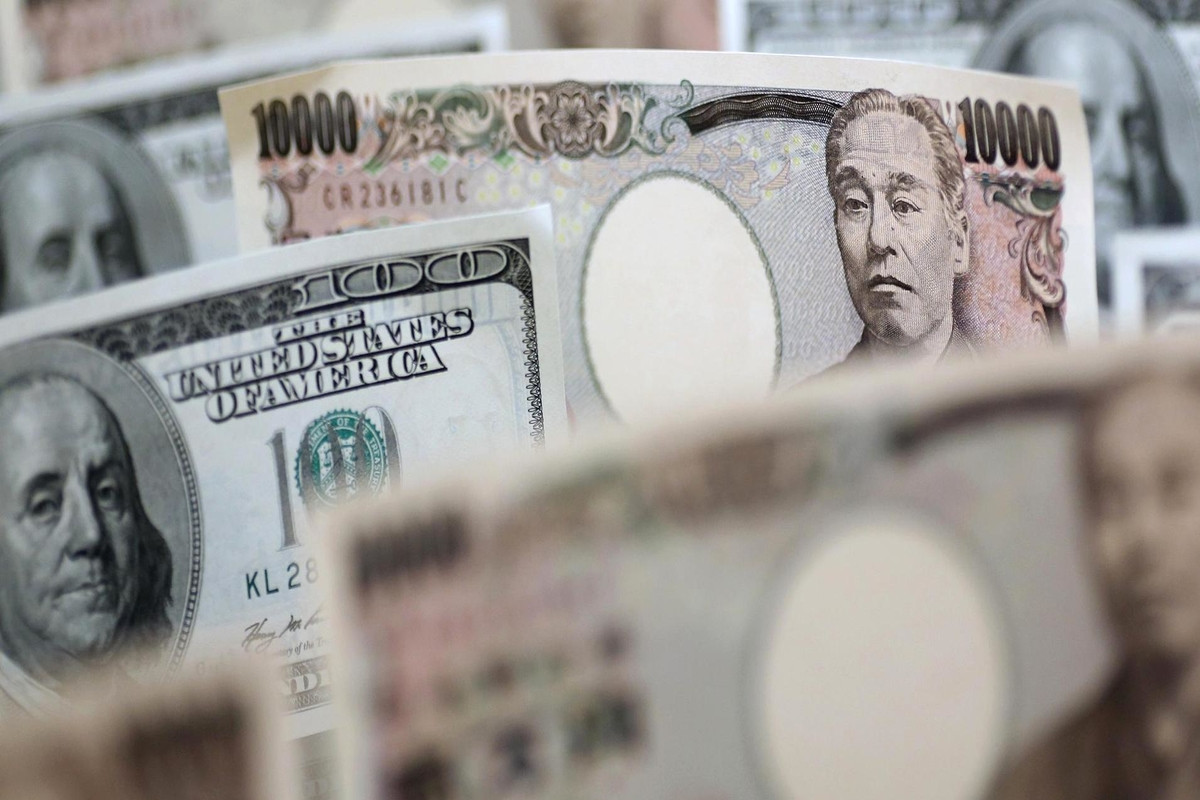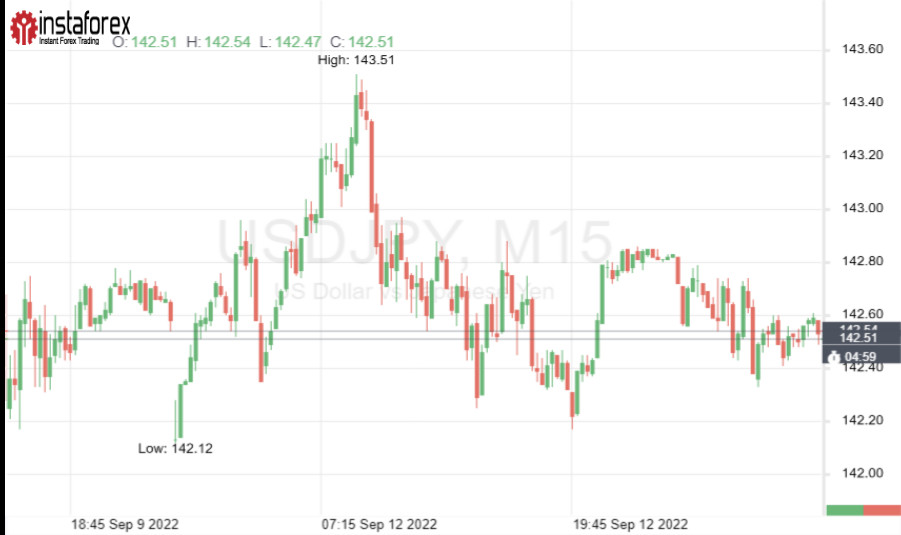
The Japanese yen has been trying to strengthen against the greenback for the second day in a row, but the latter is holding firm. Whose one will take in the end? According to experts, the JPY will win the current battle, but the USD will win the war.
Yen getting ready for a jump
Yesterday, the US dollar continued its corrective pullback from the 20-year high reached last week.
This served as a strong headwind for the USD/JPY pair. At the beginning of Monday, the asset showed a steady growth, but could not stay above the level of 143 and ended the day lower.

Pressure on the greenback came from expectations of the release of statistics on inflation in the US last month.
The report will be published today. Economists predict another weakening of inflationary pressure in annual terms.
According to them, the consumer price index will drop to 8.1% in August, after falling to 8.5% in July.
Traders fear that a sustained weakening of inflation will change the Federal Reserve's rhetoric on interest rates.
Recall that the US central bank is preparing to announce a rate hike at its September meeting, which will be held on September 20-21.
Markets are currently evaluating an 85% likelihood of a 75 bps increase. However, a strong fall in inflation could significantly dampen hawkish expectations.
Against this background, the dollar is in danger of plunging, especially when paired with the yen. Now the USD/JPY bears are just waiting for the moment when there is even the slightest hint of a slowdown in the growth of the gap in US and Japanese interest rates.
Nevertheless, analysts warn that the rise in the yen will be short-lived. After the release of statistics on inflation in the US, the yen can only get a short-term growth momentum.
In the future, the JPY will continue to fall against the US dollar. And there are two good reasons for this.
Reason #1: One-sided intervention will not work
After the yen plunged sharply against the dollar last week and nearly touched a critical 145, the Japanese government sharply tightened its intervention warning.
Several high-ranking officials immediately stated emphatically that the action plan to support the yen is already on the table.
Market confidence that the Japanese authorities may soon move from words to deeds, has grown after Friday's meeting between Bank of Japan Governor Haruhiko Kuroda and Prime Minister Fumio Kishida.
Both expressed great concern about the rapid fall of the national currency.
Officials' comments helped the yen to stabilize slightly, but it is still well above the levels at which Japan has previously interfered in the market.
Analysts believe that now the red line for the Japanese authorities is the level of 145. As soon as the yen tests this mark, the intervention will not be long in coming.
Some experts have no doubt that Japan will take this step, since the country now has much larger foreign exchange reserves than in 1998, when it last intervened to support its currency.
At the end of August, Japan's foreign exchange reserves amounted to $1.17 trillion. In the spring of 1998, Japanese authorities spent about $21 billion propping up the yen on their own, equivalent to about 10% of the country's foreign exchange reserves at the time.
However, there is also an opposite opinion. Thus, Bloomberg analysts believe that the Japanese government will not risk launching a unilateral intervention, given its previous bad experience.
In 1998, only US support was able to turn the tide of the currency attack on the yen. Moreover, the actual participation of America was not even required.
The Japanese currency began to rise on the news that the then US Treasury Secretary Robert Rubin was going to meet with Japanese Treasury Secretary Kiichi Miyazawa.
As for today, America's help looks unlikely. Last week, the US Treasury confirmed its unwillingness to support any potential intervention in the foreign exchange markets. This position is not favorable for the yen.
Reason #2: The Bank of Japan will continue to be dovish
It is possible to argue about whether or not the Japanese government will decide on foreign exchange intervention for a long time. The only thing that most experts now agree on is its ineffectiveness at this stage, when the divergence in the monetary policy of the Fed and the BOJ continues to grow.
According to the chief economist at S&P Global Market Intelligence Harumi Taguchi, the key reason for the yen's weakness is the continued increase in rates in America, while the BOJ keeps the indicator at an extremely low level.
"If the position of the Japanese central bank on interest rates does not change, I see absolutely no point in intervention, even if it is supported by the United States," the analyst said.
Of course, Kuroda cannot but be concerned about the yen's current position. Recently, he often talks about the need to take measures to support the currency, but every time he makes an amendment: the central bank does not intend to change its dovish guidelines.
The market is also well aware that the BOJ now has no reason to cancel monetary stimulus and raise interest rates.
The country's economy has not yet recovered from the COVID-19 pandemic, and inflation is not as high and sustainable as in other countries.
That is why many experts are inclined to believe that at its next meeting, which will be held on the same dates as the Fed meeting, the Bank of Japan will once again confirm its commitment to ultra-soft monetary policy.
Based on this, we can safely say that the downward trend in the yen will continue.
 English
English 
 Русский
Русский Bahasa Indonesia
Bahasa Indonesia Bahasa Malay
Bahasa Malay ไทย
ไทย Español
Español Deutsch
Deutsch Български
Български Français
Français Tiếng Việt
Tiếng Việt 中文
中文 বাংলা
বাংলা हिन्दी
हिन्दी Čeština
Čeština Українська
Українська Română
Română

